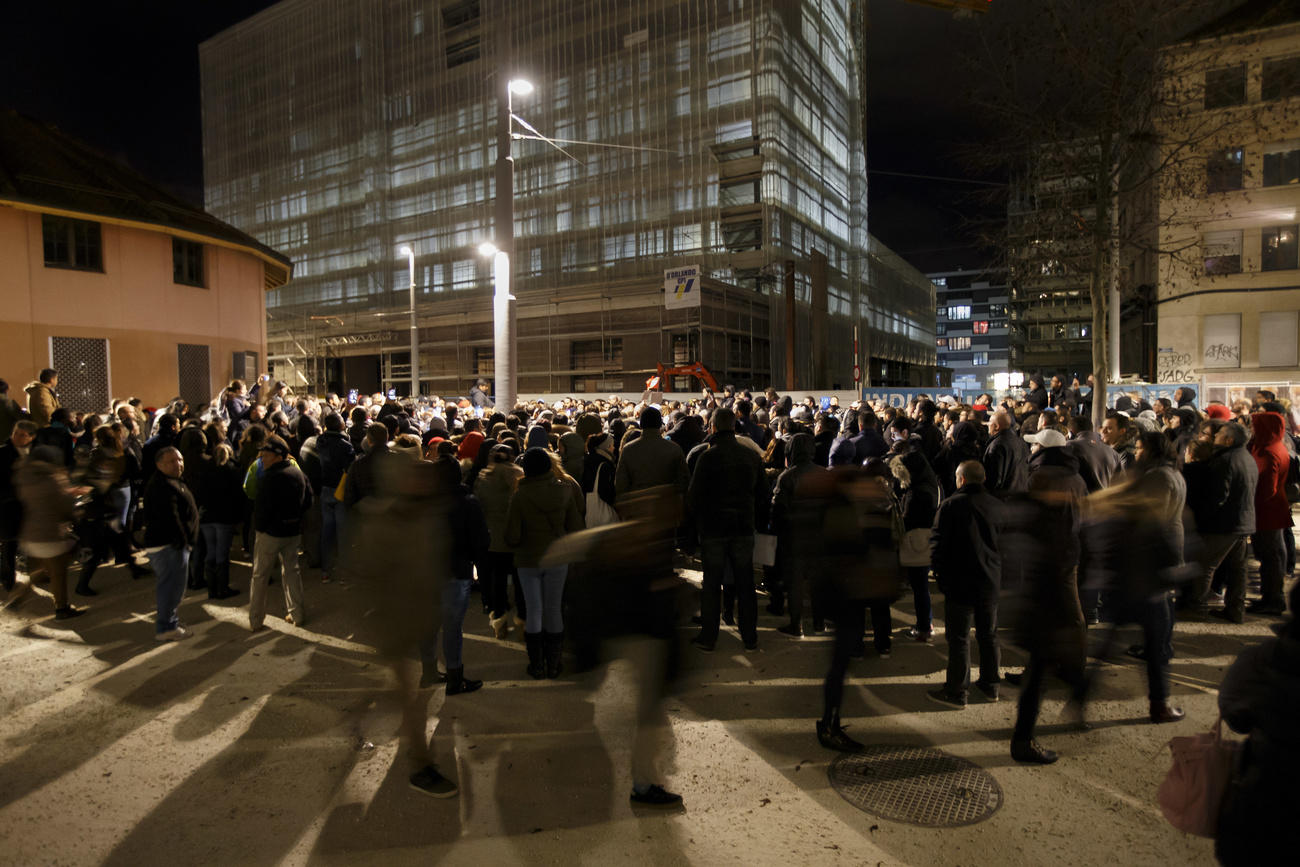
Do sanctuary cities exist in Switzerland?

The United States has recently seen cities face off against federal authorities on immigration issues. In Switzerland, similar policy differences are emerging on a more modest scale.
Once used to refer to criminals seeking immunity in churches, these days the term “sanctuary” has come to mean something more secular: a “sanctuary city” is one which defies national laws by offering services and protection to undocumented residents.
The issue is especially controversial in the US, where cities including Chicago, New York, and the “sanctuary state” of California have refused to cooperate with what they see as the overly-restrictive immigration policies of President Donald Trump’s administration.
Such cases are rarer in Europe and Switzerland. Yet cities here are also starting to “step up in areas where they previously had no prerogative”, according to David Kaufmann, professor of Spatial Development and Urban Policy at the Federal Institute of Technology ETH Zurich.
Speaking at a series of conferences External linkheld in Zurich, Bern, and Geneva on the theme of sanctuary cities in Switzerland, Kaufmann said that some initiatives are starting to test the balance between federal, cantonal, and local power.
The Papyrus blueprint
The most obvious example has been the ‘Papyrus’ scheme, a Geneva project that is working to regularise some 3,500 clandestine residents, a large proportion of them Latin American women employed as domestic workers.
This was a case of Geneva “opening up a little to the softening of the regularisation process”, says Kaufmann. Normally, cantons can legally opt to regularise individuals in cases of proven “hardship”. Papyrus, however, was done on a much wider scale, and was also done in the framework of a careful process – involving NGOs, cantonal and federal authorities – that assured irregulars they were not risking deportation by applying.
And though the federal authorities insisted it was “not a collective regularisation but a case-by-case evaluation”, Papyrus has attracted attention from other cantons, including Basel City – Switzerland’s third-largest metropolis, after Zurich and Geneva.
Cantons and city-states
But whether the template could work elsewhere is unclear. Firstly, Kaufmann says, the structures put in place for Papyrus were long in the making and relatively context-specific. Secondly, not all Swiss cities have these high policy-making competences that Geneva has.
Geneva and Basel City are unique examples, he says: both are essentially “city-states” – cities and cantons at the same time. In practice, this means that city (where most irregulars live) and canton (which has policy-making prerogative) often align. But in places like Zurich or Lausanne, left-wing city governments often clash with the bigger and more conservative cantons around them, and struggle to introduce such policies.
In Zurich, this divide is clear. The city of 428,000 is governed by a left-leaning body. The canton around it is centre-right. When the idea of a Papyrus-type regularisation was raised at the cantonal executive level in 2018, it was shot down. “The situation in the canton of Zurich does not compare with that in canton Geneva,” the government wrote.
City ID cards
With an institutional and political situation that is very different from that of the US, Swiss cities have thus been mainly pursuing more modest projects. In Zurich, this has included the City Card – an ID set to be issued to all residents of the city, including undocumented people, that could be used as a valid ID without fear of questioning or arrest.
Yet even here, movement is slow, Kaufmann says. Despite being somewhat in favour of the idea, the Zurich city government had been reluctant to introduce it due to legal uncertainty. It was only the impetus of civil society in pushing it that forced the government into the position of having to present a policy draft within the next year.
Payal Parekh from the “Wir sind alle BernExternal link” (“Bern for everyone”) network, who also spoke at the sanctuary cities event, said that plans are underway to introduce a similar ID card in the Swiss capital. It’s one of the key initiatives pushed by her association, she said, which also organises intercultural cafés and debates for those interested in politics but who don’t have the right to vote.
Parekh admitted that such efforts are nowhere near enough to qualify the city as a “sanctuary”. But she said that they’re part of a local groundswell that could prompt city authorities to begin making more gestures towards undocumented migrants in public policy.
In Bern, she reckoned, conditions are “optimal” for such initiatives. Firstly, it’s a city which retains a significant amount of competence when it comes to citizenship policy; secondly, like most Swiss cities, “it’s strongly left-wing”.
An estimated 76,000 undocumented people live in Switzerland, according to a 2015 study, making up about 1% of the population. Some 28,000 live in Zurich, 13,000 in Geneva, 12,000 in Vaud, 4,000 in Basel City, and 3,000 in Bern. The exact numbers are unknown, and these figures were calculated according to the average of estimates by different experts.

In compliance with the JTI standards
More: SWI swissinfo.ch certified by the Journalism Trust Initiative


























You can find an overview of ongoing debates with our journalists here . Please join us!
If you want to start a conversation about a topic raised in this article or want to report factual errors, email us at english@swissinfo.ch.